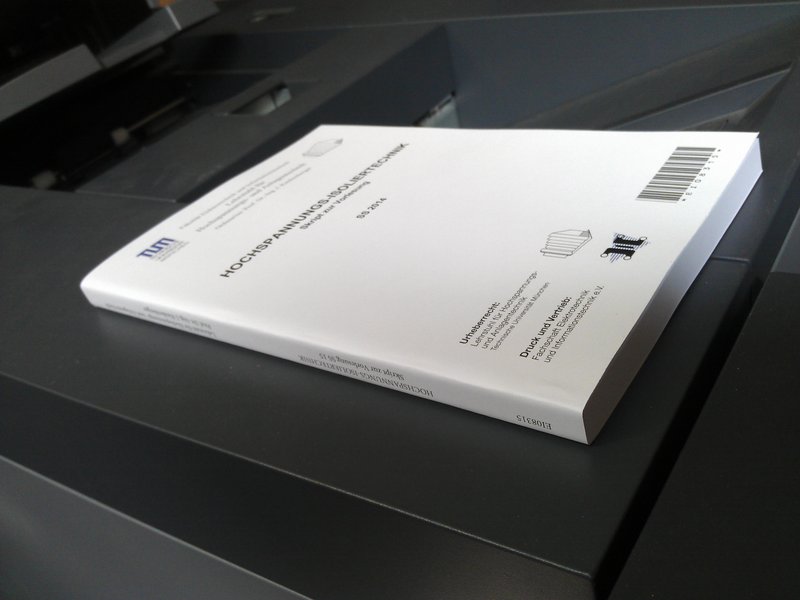Information for Chairs #
At the beginning of August 2015, we received a new printing machine, which has brought about some changes.
How does lecture notes printing work? #
- For us, the lecture notes season always starts towards the end of the lecture period (beginning of July/end of January).
- At this time, we contact you as the presumed advisor and ask you to send us new or updated lecture notes. If nothing has changed in the lecture notes, a brief note is sufficient. (If we have wrongly identified you as the advisor, please let us know.)
- The deadline for new submissions is usually 5-6 weeks before the start of lectures.
- We will send you a sample copy for review. If this is satisfactory, you can give us permission to print.
- Only after permission is granted will our printers start printing for our fellow students.
- We print the lecture notes according to the Müller principle. Lecture notes for which we receive printing approval first will be printed first. (Therefore, if you are late, there is a risk that the lecture notes may not be available at the start of lectures.)
- Students can then purchase the lecture notes from us at the lecture notes sales counter from the first day of lectures.
Our current Products: #
Lecture notes of up to and including 136 pages of content (excluding cover page) will be bound in the usual double-stapled fold. (so-called “Saddle Stitch”). Lecture notes with 137 pages of content or more (excluding cover page) will be glued as seen below.

Test example (the cover won’t be in white but in the usual color)

Example spine
Formatting of the script #
or: How should a script be formatted so that it looks good when printed?
- Page numbers should be centered or alternate between right and left. The first page (usually the table of contents) should have the page number on the right. (Otherwise, either the first page is blank or the page numbers are inside.)
- The page margin should be at least 10mm on the outside, so that production tolerances are no longer visible to the untrained eye.
- It is recommended to have a margin of at least 15mm on the inside. (including binding correction, if available) However, this is not a technical limit, but purely aesthetic.
- For glued scripts, a binding correction (BCOR in LaTeX) of about 10mm should be set if the automatic text mirror calculation of the KOMA class is used.
- For stapled scripts, we reduce the width of the page from 21cm to 19.5cm, as the page margin is trimmed due to production. To avoid distortions, the top and bottom page margins are increased accordingly.
On the deadline #
The deadline is to be understood in such a way that we need about 3-4 weeks net for the printing of all scripts. In the last week before the start of the semester, printing becomes difficult due to various introduction days, their preparation, and the stocking of the script sales. In addition, we create a (free) sample copy for each script and only print the full edition after a printing approval. Therefore, we always set the “deadline” 5-6 weeks before the start of classes, since our printing machine usually fails for about 1 week due to maintenance work during a semester print run of around 1 million pages.
If, as a lecturer, you cannot complete the template by the deadline, we will of course still try to bring the script into the script sales for the start of the semester. However, it may happen that it will only be available in the second week of lectures or even later. Nevertheless, we would be grateful if we could receive the template early, as we will also need to attend lectures again from the start of the semester.
Contact #


